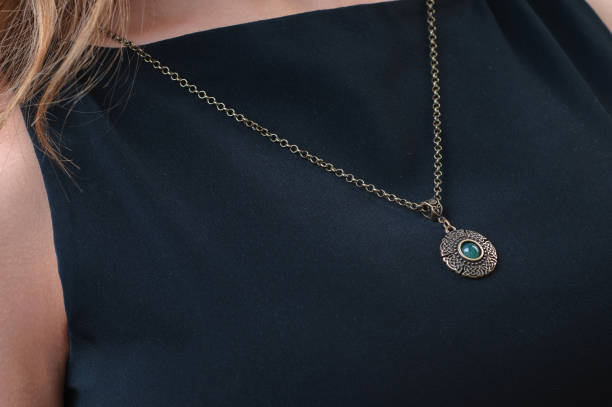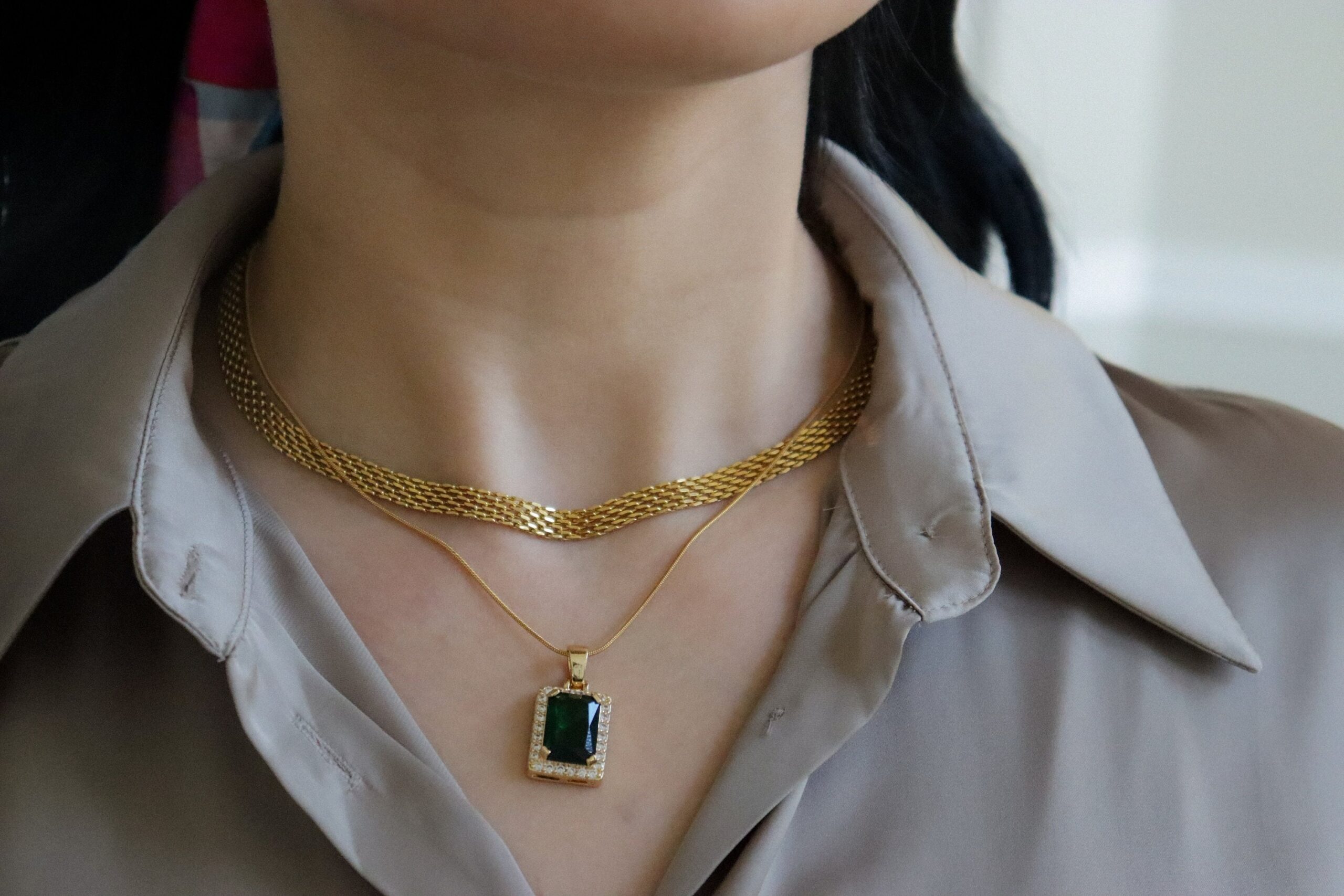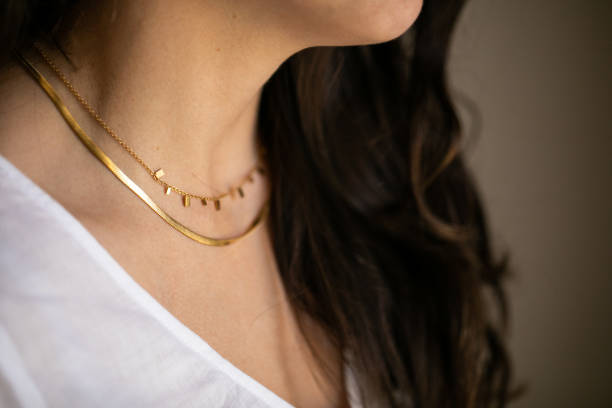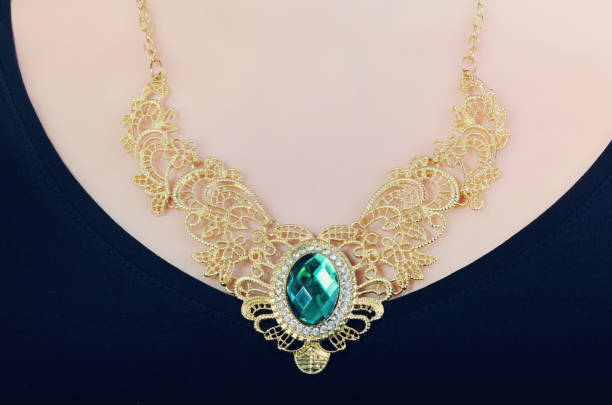The Hidden Environmental Impact
We all admire an 18k gold necklace womens not only for its beauty but also for what it represents—luxury, status, and timelessness. However, the truth is, the magnificence of gold comes with a hidden price tag that’s not often discussed: its environmental footprint. Before you throw on that dazzling piece of jewelry, let’s chat about what went into creating it—beyond just the craftsmanship.

Imagine this: You’re standing on a pristine hillside, deep in a faraway land. Birds sing in the distance, the air is crisp, and the scenery looks like it came right out of a travel brochure. Now, replace that scene with noisy machines, giant pits, and dusty air. That, my friends, is the harsh reality of many gold mining sites around the globe.
Gold mining is an invasive process. Miners dig up massive amounts of earth to find tiny specks of gold. Picture this: for just one ounce of gold, companies may process over 30 tons of ore. And that’s not even the scariest part. Gold extraction often involves chemicals like cyanide and mercury. Yeah, you read that right—cyanide! This isn’t some TV crime show; this poison is used to separate gold from the rock.
Now, imagine these chemicals seeping into the water supply. Local rivers and lakes turning into toxic wastelands. Animals can’t drink that water. Local communities can’t either. It’s a double whammy! The impacts spiral out to affect every living thing in the vicinity.
Alright, let’s add a bit more to this tangled web. Soil erosion and deforestation are huge pieces of the puzzle. Forests, which are home to countless species and act as our planet’s lungs, are demolished to make way for mining operations. Whole ecosystems get wiped out in a flash. Think about all those trees, chopped down faster than you can say “eco-disaster”!
And what about the waste? Gold mines produce heaps of it. They call this lovely mess “tailings,” which are essentially toxic slurry. Sometimes these tailings are stored in large ponds. But, oh boy, if one of these ponds leaks or breaches, it’s like Pandora’s box. Toxic sludge can spread over miles, destroying everything in its path.
However, let’s not merely paint a doom-and-gloom picture. This isn’t a Hitchcock movie where the bad guys always win. More and more people are waking up to the environmental nightmare of gold mining. Companies are starting to adopt more eco-friendly methods, although the pace can feel like watching paint dry.
Fairtrade-certified gold and recycled gold options are increasingly popping up. They’re not silver bullets, but every little bit helps, right? It’s like swapping out your plastic straws for metal ones—small actions can lead to big changes.
Consumers hold a lot of power here, too. Asking questions before your next purchase can go a long way. Who made your jewelry? What mining practices do they follow? If they stammer or fumble for an answer, maybe it’s time to rethink where you’re spending your hard-earned cash. Because let’s face it, we vote with our wallets. Companies will have to listen if enough people demand eco-friendly and ethically sourced gold.
Shining Choices: Tips for Picking Eco-Friendly 18k Gold Jewelry
Hey jewelry lover! Thinking about getting an 18k gold necklace womens or perhaps a pair of sleek earrings? There’s an entire treasure chest of eco-friendly options right at your fingertips. Let’s dive into this golden labyrinth and find the best ethically-sourced 18k gold, shall we?
First off, Know Your Gold
18k gold contains 75% pure gold, combined with other metals for strength and color. A solid choice for its rich hue and durability. But not all gold glitters green. You’ll want to make sure it’s coming from a responsible source.
Certifications: Your New Best Friend
Trustworthy certifications are like treasure maps guiding you to the right choice. Look for labels like Fairmined or Fairtrade Gold. These certify that gold is mined sustainably with fair labor practices. Without these, you might end up with some shady, blood-stained bling. Nobody wants that, right?
Recycled Gold: A Shiny Savior
Recycled gold? Yes, please! Opting for jewelry made from recycled gold reduces the demand for new mining. Manufacturers melt and refashion old gold, which means less environmental strain. It’s the gift that keeps on giving.
Brand’s Ethical Stance
Is the jewelry brand you’re eyeing committed to ethical practices? Stalk their websites or social media pages. Brands that are on the up-and-up will flaunt their ethical credentials loud and proud. Transparency matters. Call them up. Ask questions. The green flags should be as visible as a golden sunburst.
Artisanal Miners Deserve Your Attention
Artisanal and small-scale miners often get the short end of the stick. But they’re like the hidden gems of the industry. Supporting these miners means contributing to livelihoods directly. They follow sustainable practices to extract, ensuring minimal harm to this lovely planet.
Carbon Footprint: Let’s Shrink It
Shipping, packaging, and production all leave their carbon footprints. Watch those dimensions too. Some companies offer carbon-neutral shipping or use eco-friendly packaging. It’s like hitting two birds with one stone — looking fabulous while caring for Mother Earth.
Vintage Vibes
Don’t overlook vintage jewelry. It’s like finding buried pirate treasure! Sifting through estate sales or consignment shops can yield beautiful, unique pieces. Plus, pre-loved jewelry means zero new environmental impact. Grandma’s brooch, anyone?
Gemstones in the Mix
Got a thing for emeralds, rubies, or sapphires? Be equally discerning. Conflict-free stones are a must. They should have certifications like Kimberley Process or be sourced from labs that create stunning gems without any dark stories. Informed choices shine the brightest.
Artisans and Small Businesses
Supporting local artisans or small jewelers can add that personal touch. Custom, handmade pieces often come from smaller batches, meaning they’re crafted with love and less environmental impact. It’s a win-win. Unique, eco-friendly, and supporting someone’s dream.
So, ready to pick your glittering eco-friendly 18k gold jewelry? You’re not just choosing a piece; you’re making a statement. One that says you care about sustainability as much as style. Time to shine, ethically!








